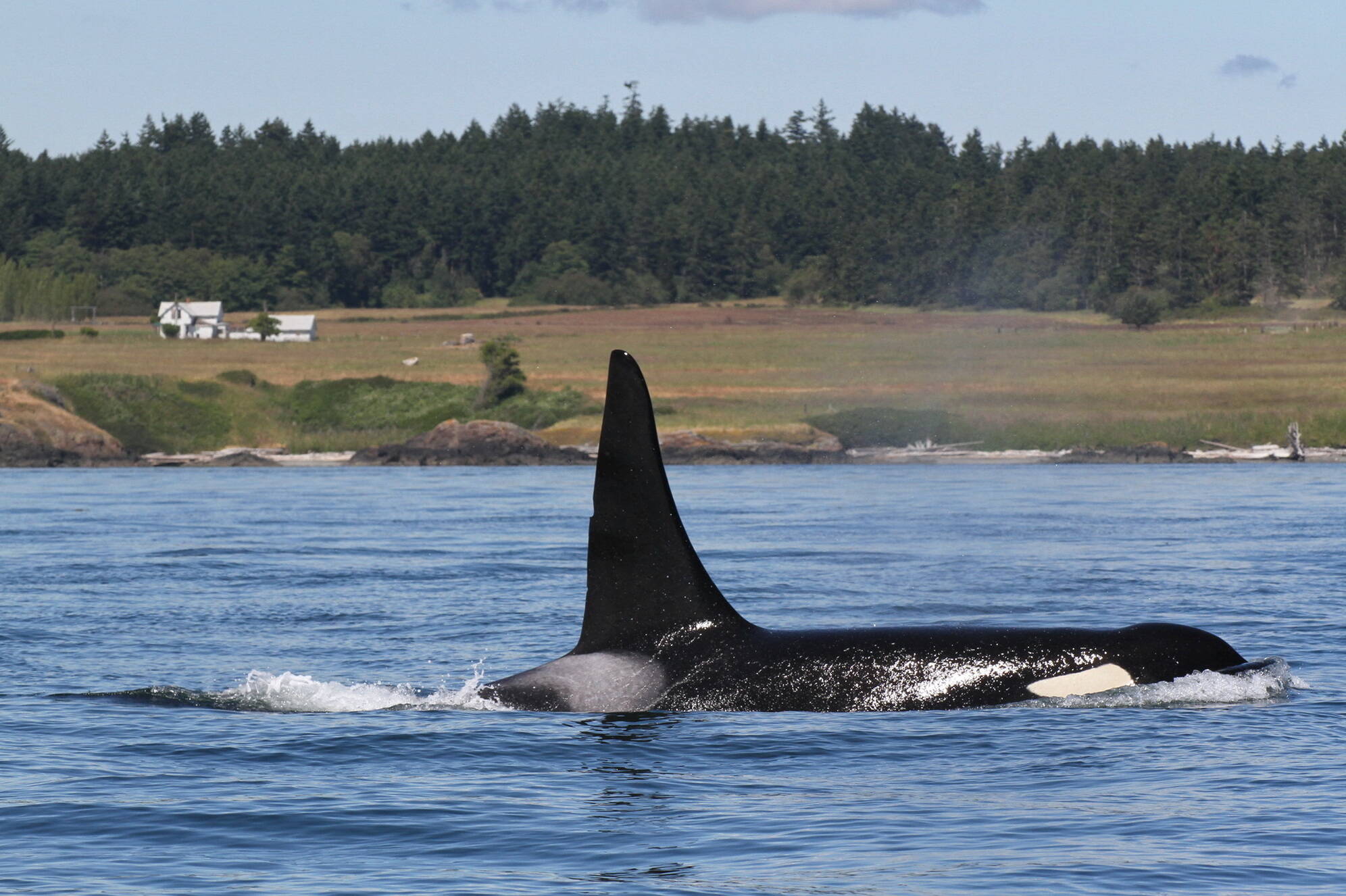Intelligent and bearing a fearsome reputation, killer whales — also known as orcas — are the undisputed top predators of the world’s oceans. A familiar sight to Vashon residents, orcas are also revered and deeply intertwined with the culture of Pacific Northwest indigenous peoples.
“A mighty mass and lump of flesh without all fashion, armed with most terrible, sharp, and cutting teeth.” Thus did the Roman historian Pliny the Elder describe killer whales in his first century text on natural history. Pliny called them “Orcæ”, which may originate from the Latin for a type of whale.
Pliny noted that killer whales would attack the calves of large whales around the Strait of Gibraltar, and also tells us that the Emperor Claudius once ordered the killing of an orca in a Roman harbor. (Pliny, by the way, was a casualty of the famous eruption of Mount Vesuvius in AD 79).
The fascinating 13th century account of Iceland called The King’s Mirror uses the term Grampus for this species (a word which these days refers to a different cetacean).
The mediaeval author notes that they “have teeth in proportion to their size… They are also ravenous for other whales just as dogs are for other beasts. They gather in flocks and attack large whales, and, when a large one is caught alone, they worry and bite it til it succumbs.”
The scientific name for killer whales is Orcinus orca, which was given in 1758 by the Swedish naturalist Linnaeus, who invented the modern system for classification of living things. Orcinus may mean “belonging to the underworld”, or might instead come from the Latin for a barrel, referring to the whale’s body shape.
For two and a half centuries, Linnaeus’ name has been used for all the world’s killer whales, but it has become increasingly apparent that this is a huge over-simplification.
Many islanders already know that there are two kinds of orcas in our waters: those that eat fish, and those that prey on marine mammals. Although the appearance of these two “ecotypes” is superficially similar, they do not associate with each other, and indeed have probably not mated together for several hundred thousand years.
In other words, they’re different species — a fact which was finally recognized by a landmark genetics study published just this year.
What’s more, there are several other ecotypes found across the world’s oceans, and some of these likely also represent separate species. There are at least five types in the Southern Hemisphere, all of which have distinctly different prey preferences, and probably social systems. Some specialize in hunting minke whales, while others take primarily seals or penguins.
Killer whales vary in size depending on ecotype, with the largest reaching 30 feet in length. Males are bigger than females and, as adults, are characterized by a huge dorsal fin that can be up to six feet tall. The upper and lower jaws each contain 10-14 pairs of teeth (which, by the way, bear more than a passing resemblance to those of the infamous dinosaur Tyrannosaurus rex). Females produce a single calf after a gestation period that lasts somewhere between 15 and 17 months.
Our local whales have been studied for decades, and the two ecotypes have long been recognized as distinct in both appearance and behavior. Originally they were termed “residents” and “transients”, but actually both occur here year-round.
All of these animals have been individually identified by unique markings and scars, work pioneered by the late biologists Ken Balcomb and Mike Bigg (the so-called transients are now formally known as “Biggs’ killer whales”). The residents eat fish (primarily king salmon), while the Biggs “transients” prey on seals, dolphins and porpoises; they also hunt large whales, notably young calves on migration.
Beyond prey, there are other differences between the two species. Transient orcas hunt in smaller groups, and usually silently; residents, by contrast, travel in larger pods. In both species, the social bonds between individuals in a pod are strong and permanent. If you’re born into a pod, you remain with it for your entire life; pods are matrilineal in nature and contain multiple generations. Mating is believed to occur outside the natal group.
Although orcas are common in the waters of the Pacific Northwest, they can easily range farther, from Alaska to California.
Female orcas have a longer life span than males, with a longevity that can exceed 90 years. Orcas are also one of very few mammals (along with humans) who undergo menopause, living many years after they are no longer reproductively active. This is likely because of the value of knowledge among the oldest females, who can guide the pod to productive habitats in lean times.
Beginning in the 1960s, large aquaria — notably Sea World — began capturing Pacific Northwest orcas for public display, killing some in the process. The captures, together with human-caused declines in salmon populations, contributed to the resident orcas’ current endangered status.
Knowing as we now do how tight their societies are, this brutal campaign undoubtedly had long-lasting social and psychological impacts on the pods concerned, and is regarded by many whale biologists (including me) as nothing less than an environmental crime.
Indeed, given the orcas’ lengthy life span, there is little doubt that there are females in our local population who remember well how humans devastated their tight-knit society all those years ago — something to ponder the next time you see them from the ferry.
Phil Clapham is a whale biologist who lives on Maury Island. Prior to retiring in 2019, he directed the Cetacean Assessment and Ecology Program at NOAA’s Alaska Fisheries Science Center in Seattle.



